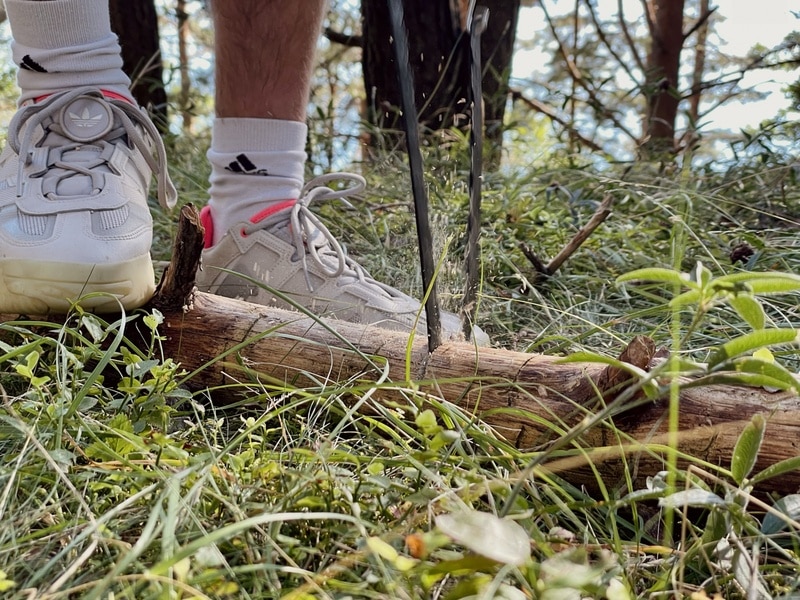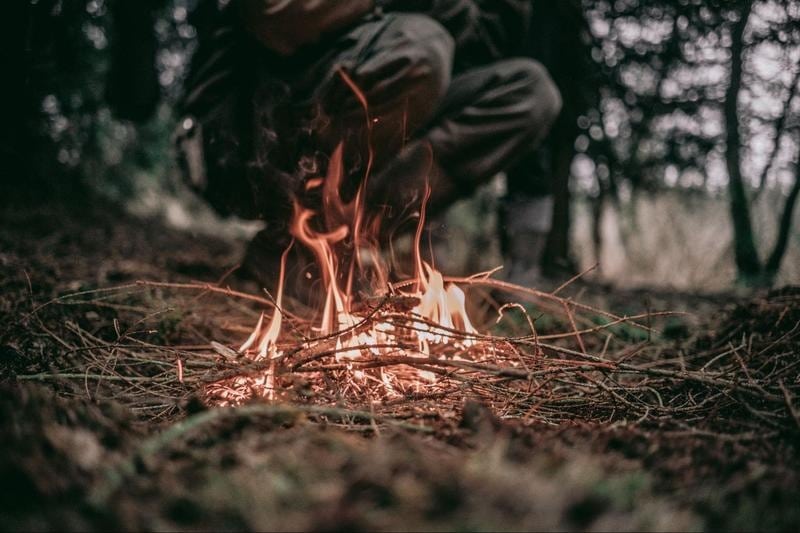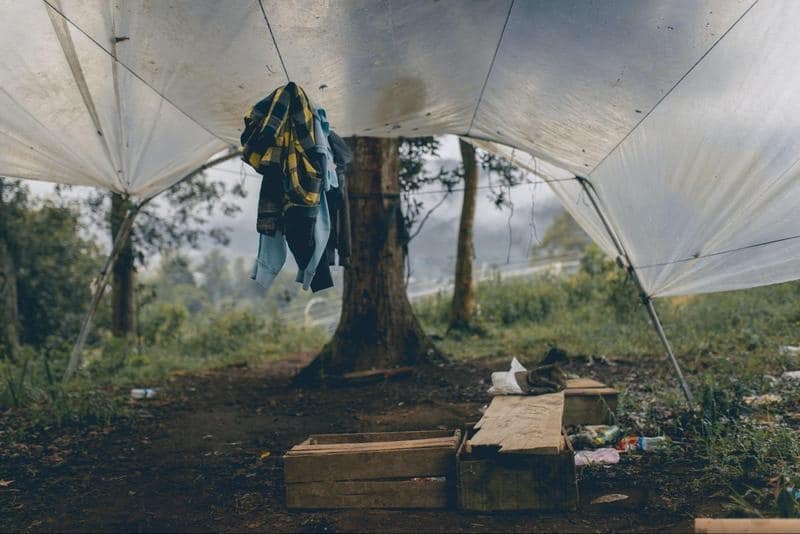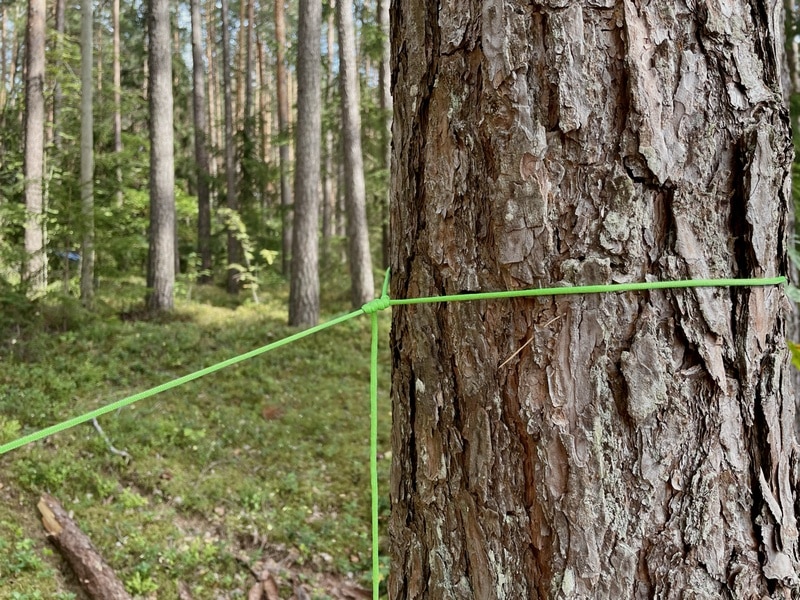While off to the wild, you must be prepared for survival situations in advance. The 5 C of Survival works as a base for putting on a decent survival kit. These tools will heavily influence your chances of staying safe and sound, as they’re almost impossible to reproduce or build from the material you’d find in nature.
The 5 C’s stand for cutting, combustion, cover, container, and cordage. They revolve around the four critical components of basic human needs – fire, water, shelter, and food.
In a survival scenario, a few basic tools can bridge life and death. So you better have it with you.
What does the 5 C of Survival mean?
Before we jump into the specific tools and recommendations for these categories, let’s define what’s behind each C.

1. Cutting
The first C refers to cutting through different materials, which can be helpful for building shelter, food preparation, cooking, or self-defense.
Cutting tools should be multi-purpose – neither too small nor too large – to serve as well if other equipment fails. For example, a cutting tool with a high-carbon steel blade could work hand in hand with a ferro rod to spark a fire.
Saws, multi-tools, fixed-blade knives, and axes fall under this category.
2. Combustion
It’s all about fire-making tools and tinder to create fire for warmth, cooking, signaling, or defense. In a survival situation, having a reliable way to build a fire quickly – even in extreme weather conditions – is crucial.
Fire steel, ferro rods, waterproof matches, and lighter are some examples of combustion devices.
3. Cover
Cover reflects the capability of protecting yourself from the elements in different weather conditions with clothing, tents, and tarps. Things like rain gear or sleeping bags are also part of this category.
4. Container
It’s how you’ll carry water and other supplies. The right container, like a stainless-steel water bottle, will be waterproof, durable, and multi-purpose.
5. Cordage
Cordage describes the ability to tie things together, which can help make shelter, gather food, or make other tools. Cords and strings belong to this category.
5 C’s of Survival
The trick here is to add multiple options to your survival kit. Things break and get lost, so it’s wise to carry extra of each item from the categories on the list of the five C’s of survival as they’re so vital.
Cutting: Survival knives and tools
Apparently, the most challenging category to replicate is tools (cutting tools, especially). Lacking one tool can make a simple task nearly impossible. Below are some time-tested, easy-to-carry, strong multi-purpose knives and tools that won’t weigh you down.
Morakniv Companion Fixed Blade Knife works perfectly in all weather conditions. It sits in hand comfortably, is ultra-sharp, and multi-purpose for preparing food, carving, and cutting fire tinder, and comes with a belt clip sheath.
Leatherman Adventure Multi Tool is an ultimate 19-in-1 gadget that squeezes a knife, saw, hammer, bottle and can openers, fire starter, and more into a small 7.5-oz multi-tool.
EverSaw Folding Hand Saw is an 8-inch long folding saw that cuts like a charm. It has an SK5 carbon steel blade, a non-slip ergonomic design, and triple-cut razor teeth. EverSaw is a light and multi-purpose tool with a secure blade lock.
Sometimes a fixed-blade knife might not be the go-to choice if you don’t need it hanging from the belt. Then, Kilimanjaro Stretta Neck Knife, a small but mighty full-tang knife with a stainless steel neck chain will do the job.

Combustion: Survival fire starters
Fire is priceless. Creating fire is a primary priority in survival scenarios. Its benefits come all the way from warming our bodies and boiling water to cooking food and illuminating the spot. Our favorite fire starters to rely on in any weather conditions include:
QuickSurvive Fire Starters. These are simply unbeatable fire starters for any weather conditions, including heavy storms, high altitudes, and snow. We love how it takes no more than a few seconds to light and how durable and reliable this fire starter is.
Exotac fireSLEEVE Waterproof Floating Lighter Case is a must-have tool to protect your lighter from the elements. Exotac waterproofs your lighter so you can get your fire going rapidly.
Bayite Survival Ferrocerium Paracord is our favorite emergency ferro rod kit with a paracord handle and a striker. It’s an all-weather tool that can start fires regardless of humidity and altitude.
Some DYI fire starters, like cotton wool soaked in vaseline, can also start fires that’ll burn for a long time. You can find detailed guidelines on how to make various campfire starters at home, plus a thorough review of the best store-available options on our blog post.

Cover: Shelter tarps, tents, clothes
First things first – wear the right clothes based on the climate and the season you’re in. If we talk cooler conditions, the good rule of thumb is to layer clothes:
- 1st layer: Underwear
- 2nd layer: Moisture-wicking mid-layer to deal with sweating
- 3rd layer: Insulated layer to preserve body heat
- 4th layer: Outer layer to prevent wind, rain, and cold
Wool and synthetic fabrics are better at preventing heat and are quicker to dry than, for example, cotton. Choose responsibly.
Then, it’s time to get a portable shelter to live in:
Aqua Quest Defender Tarp is an unbeatable heavy-duty, nylon-made survival shelter built for the most extreme weather conditions. It’s 100% waterproof, unbelievably durable, and packs small into its stuff sack. Like survival scenarios require, this tarp comes with 19 – 47 loops in all four corners, so you don’t need trees to set it up.
Delmera Emergency Bivy Bag is a waterproof thermal emergency bag designed for extreme weather conditions. It’s so versatile you can use it as a groundcover or a sleeping bag liner. It weighs only 4.6 ounces and packs into a 3×3-inch bag. One trade-off you get for its lightweight is that this bivy bag is not breathable and might feel a bit claustrophobic.
If you’re planning an adventure in a cold season or a cold climate, it might be wise to pack an ECW (Extreme Cold Weather) kit, including things like a wool blanket, survival blankets, gloves, wool socks, pyle cap, scarf, and poncho.

Container: Survival water bottles
Generally, a human’s body can go for two to three days without water. A proper water container and camping water purification systems like a filter or purifier won’t take you into that situation. Don’t be tempted by water bottles with built-in filters, though, as they won’t be suitable for boiling water and cooking.
Klean Kanteen Stainless Steel Bottle is a single-walled, lightweight water bottle without coating, so you can use it to boil water.
LifeStraw Personal Water Filter is our beloved choice for its simplicity. It works like a straw, so you can basically drink directly from the water source and not worry about bacteria, parasites, microplastics, or whatever.
Though it might be useless if you’re off to the spot where no natural water sources are around. Alternatively, you can take a mini water filter to put into the bottle.

Cordage: Survival cords
You can build decent cordage from natural materials, but it would take a LOT OF time. That is not the case for a survival scenario, for sure. That’s why it made up for this list.
The best survival cordage to carry is a braided tarred nylon cord. Tarring makes it completely waterproof and tough. Plus, you can divide it into strands for smaller objects. Knots tied with this cord are more difficult to untie because of a rougher and stickier surface area.
We’ve covered everything about different paracord sizes and types on our blog post.
Here is our favorite cordage we’d recommend adding to your survival kit:
Tough-Grid 750lb Green Paracord is a military-specific type of parachute cord made from nylon. It comes in different sizes and packages suitable for all occasions.
Jute Twine is a cheaper option that you can still use to tie things (though it is not that strong) but also for fire-making. It’s an all-natural, biodegradable twine that’s sold in three thickness versions depending on what you will primarily use it for.
Ironclad Supply Tarred Bank Line is another lightweight alternative made of tarred nylon resistant to elements. It’s a versatile option that can serve for survival, marine applications, gardening, as a fishing line, etc. Bank line can be your go-to choice if you don’t need maximum, military-like strength.

Bottom line
Knowing what to do and how to deal with each tool is just as crucial as carrying it with you. You should build your wilderness survival kit according to your skills and knowledge. That means, if you know best how the small pocket knife works, don’t rely on the ax as your only survival knife.
Have anything to add or questions to ask about survival gear? Leave a comment below!